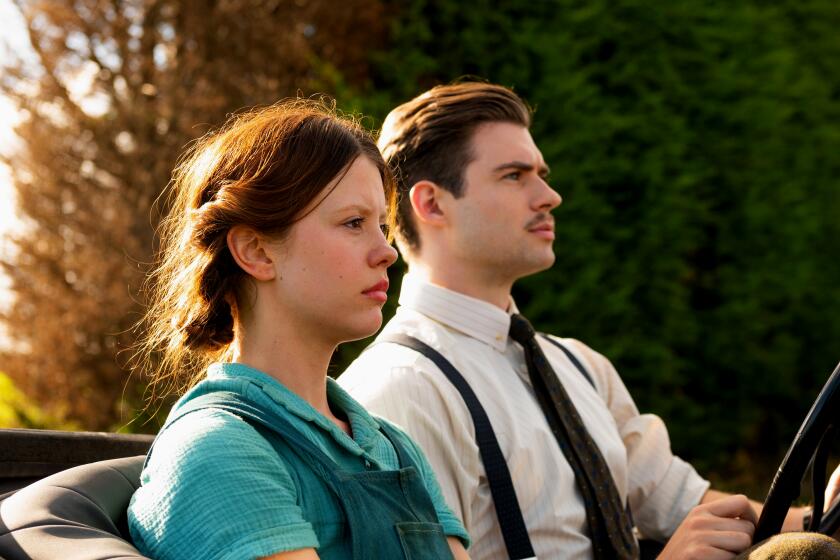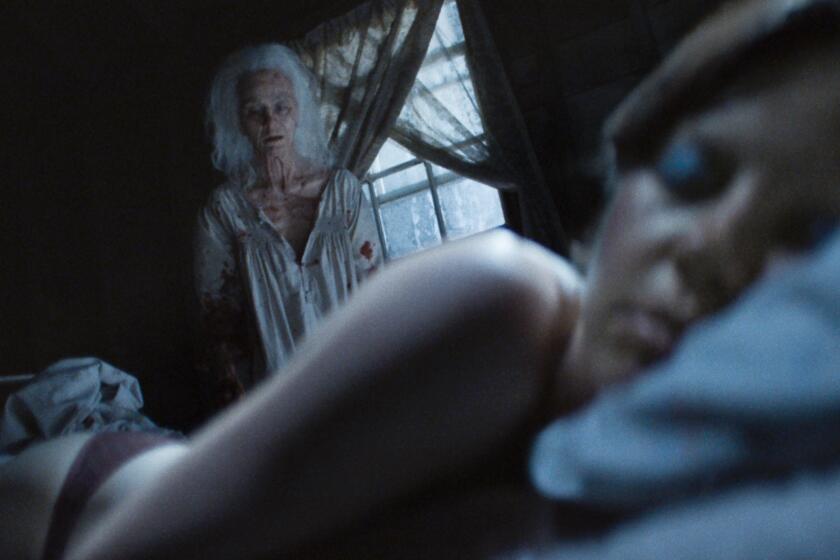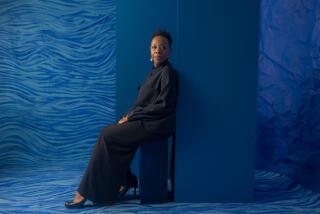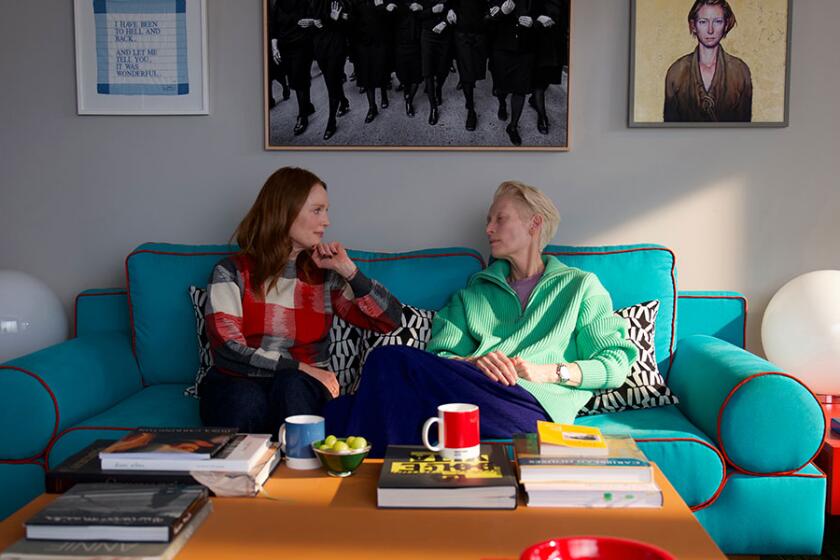A killer monologue. A ‘gift’ of a role. How Mia Goth brought her maniacal ‘Pearl’ to life
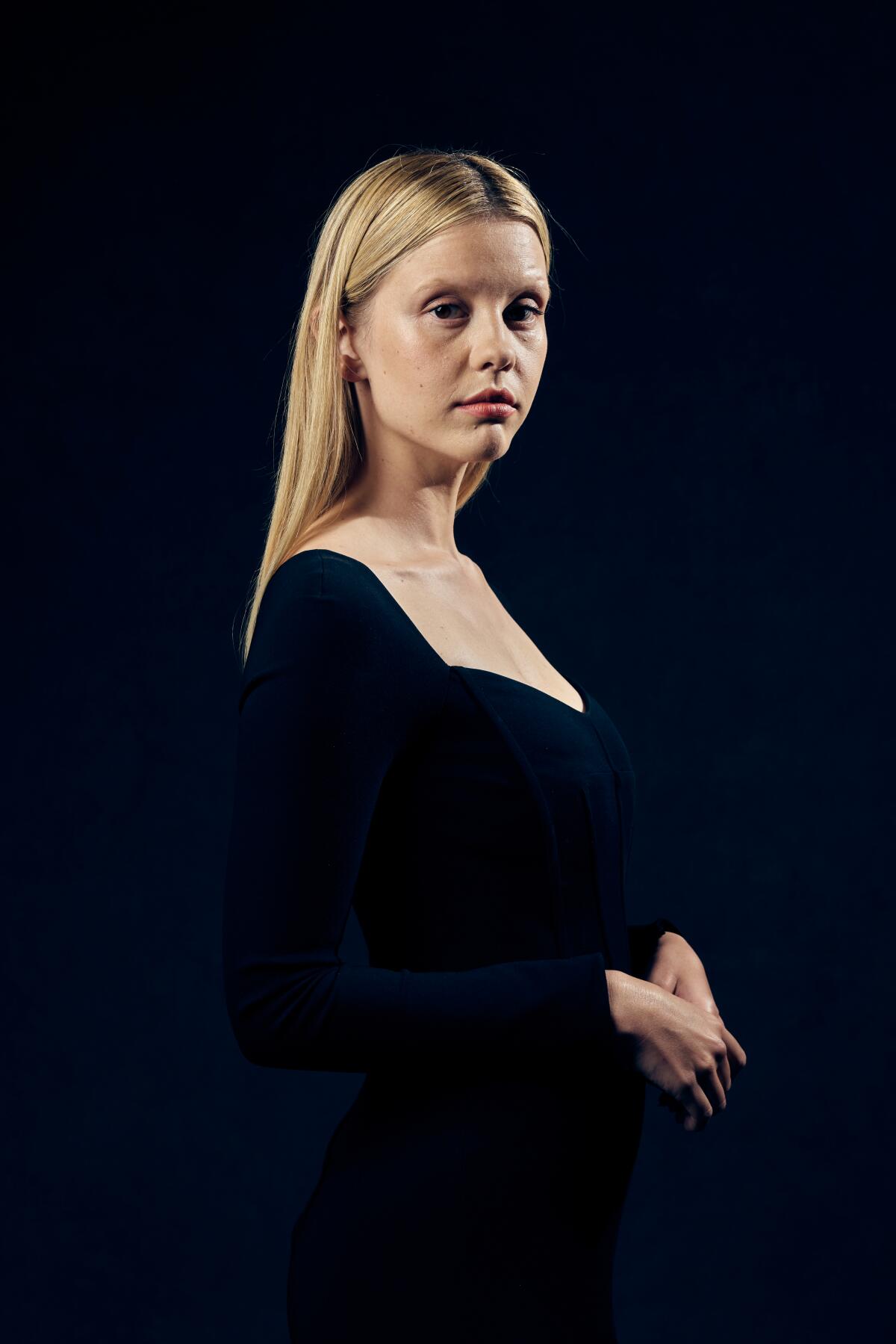
- Share via
After wrapping Ti West‘s slyly subversive slasher film “X” — starring as both Maxine Minx, an aspiring starlet in a troupe of young pornographers and, under prosthetics, the deadly biddy Pearl, whose farmhouse plays host to their ill-fated, X-rated shoot — most actors might have taken a break. A long vacation. Time to recharge. But Mia Goth is not most actors. Plus, she had a monologue for the ages to prepare for.
So instead, days later, she and West and their crew launched right into work on their prequel, “Pearl,” a darkly comedic gambit that turns back the clock six decades from “X”s 1970s-set Texas massacre to a World War I-era Technicolor fantasia — and proves, in her third and most virtuosic performance in these films thus far, that the singular Goth was long overdue for a leading star turn. (The question is: Will audiences, the industry and awards voters take note?)
Director Ti West and star Mia Goth teamed up to write ‘Pearl,’ a 1918-set prequel to the 1970s-inspired slasher/porn homage ‘X.’
Released by A24 this past weekend to critical raves after a debut at the Venice Film Festival, the period psycho-thriller lands just six months after “X” hit theaters. The prequel zeroes in on Pearl, a naïve young woman aching to escape her isolated rural life, who sours from starry-eyed farmgirl into something more sinister when her dreams of fame are threatened. It’s a richly dynamic role the likes of which Goth has never before played, and the actor, who has cultivated an eccentric body of work (“High Life,” “Suspiria”) since debuting at age 20 in Lars von Trier’s “Nymphomaniac,” jumped at the unprecedented creative and collaborative opportunity.
“It felt like a gift more than anything that this was even a possibility,” said Goth, who also executive produced and earned her first co-writing credit on “Pearl” with West. “Perhaps if it came to me a few years earlier, I wouldn’t have been ready as an actor with my craft to tackle something like that. But in many ways, everything that I had been working on and all that I had done up until that point was leading me to this.”
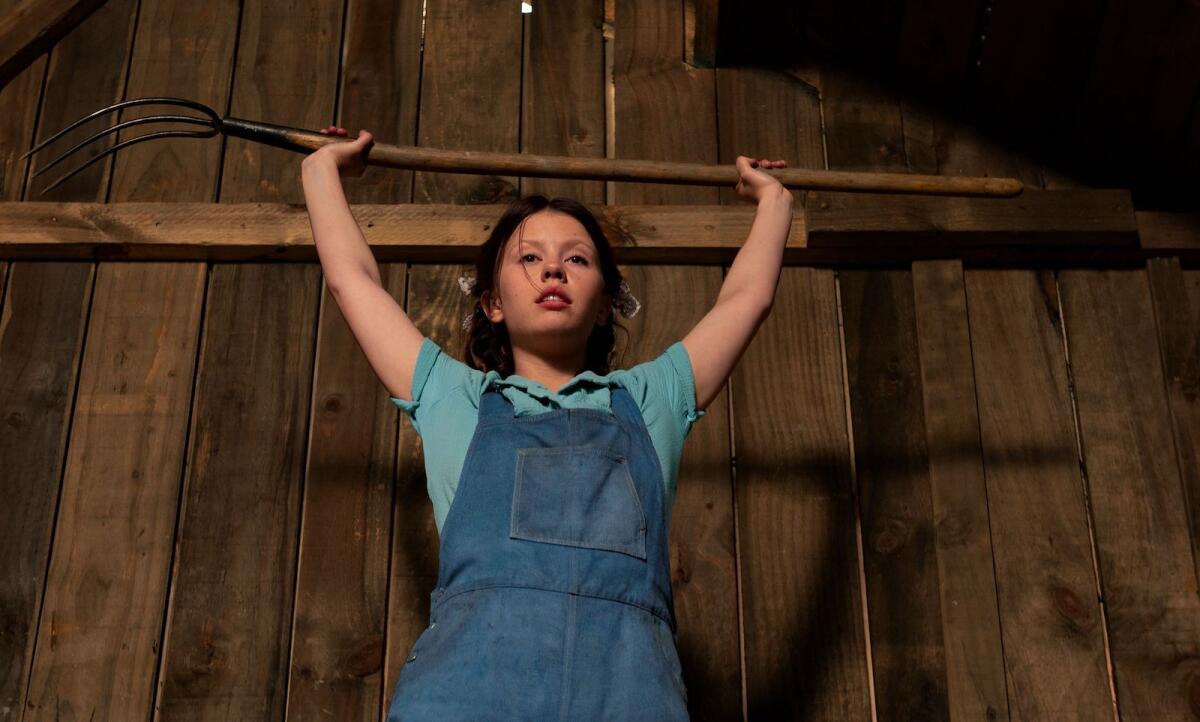
West’s pitch to A24 was daring but simple. The sprawling Texas farm set for “X” was already under construction in New Zealand, where production would take place because of the COVID-19 pandemic. West had similarly constructed an entire village for his 2013 thriller “The Sacrament,” only to see it struck after filming. Why not stay and make two movies?
While in seclusion at home before heading to work on “X,” West wrote “Pearl” over FaceTime with Goth, expanding on the rich backstory they had devised for the older Pearl. Her standalone origin story would explore how she was once, like Maxine, young and full of hope, set on becoming one of the glamorous dancers in the picture shows — until the cruelty of being a woman circa 1918, not to mention a hefty dose of inherited trauma from her austere German immigrant mother (played by Tandi Wright), sends her spiraling into madness.
“She’s got a very small ceiling as to what she can do, as to what’s deemed acceptable or appropriate for a woman of her age in that era,” said Goth.
At first, Pearl is trying her best to help her disapproving mother, Ruth, care for her father (Matthew Sunderland), who has fallen victim to the influenza pandemic. With her husband, Howard, at war, a series of escalating events triggers Pearl’s fraying nerves as “Pearl” unfolds into a live-wire portrait of a female serial killer: an encounter with a handsome projectionist, who seduces her with contraband European smut; the prospect of a local church dance audition that could be her ticket out; the farm animals that end up on the sharp end of her pitchfork; and growing tensions with her emotionally abusive mother.
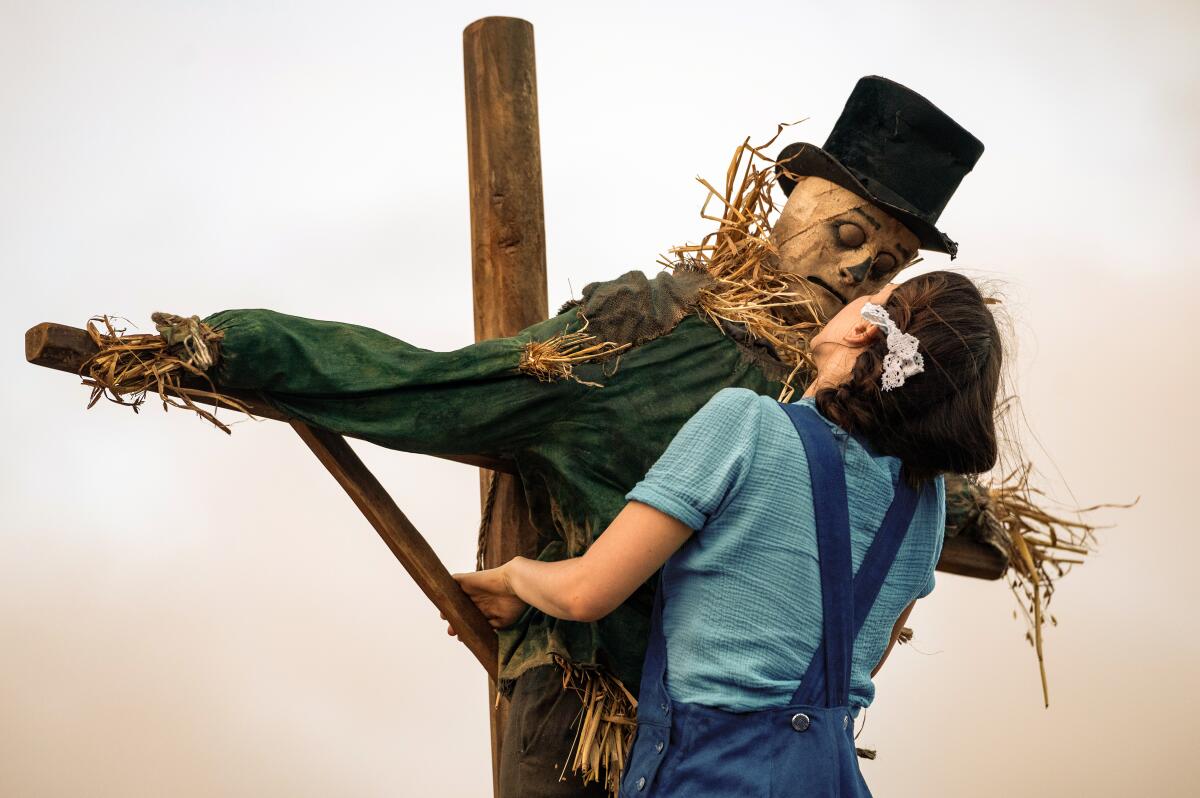
Goth unleashes a monster layered with complexity, vulnerability, humanity and rage, a deranged Disney heroine driven mad by her longing for the life she desires.
“Pearl is a dreamer, and she is such an emotional person, somebody who wears her heart on her sleeve and is quite sensitive. To be able to have a character like that to sink your teeth into was so rich,” said Goth. “She has all these dreams, all of these aspirations. She’s looking forward to the future.”
A running theme in the overarching franchise (a third film, “MaXXXine,” will see the “X” survivor take on Hollywood in the sleazy ’80s) is how people and their ambitions are shaped by the cinema they consume. That tragic undercurrent is woven into the film’s textures: Pearl’s pet alligator, for example, is named after silent sex siren Theda Bara, whose life’s work largely perished in a fire and remains lost to time, while West and director of photography Eliot Rockett’s references range from the women’s pictures of George Cukor and Douglas Sirk to “The Wizard of Oz.”
“Looking to the movies as a way to solve your problems, I think, is going to be something people always do,” said West. “But showbiz is a funny thing, where there’s so much more failure associated with it than there is success. Of the small number of people who are doing it, most are unhappy with the degree of success they have. And even the ones that are still had a lot of failure as well.”
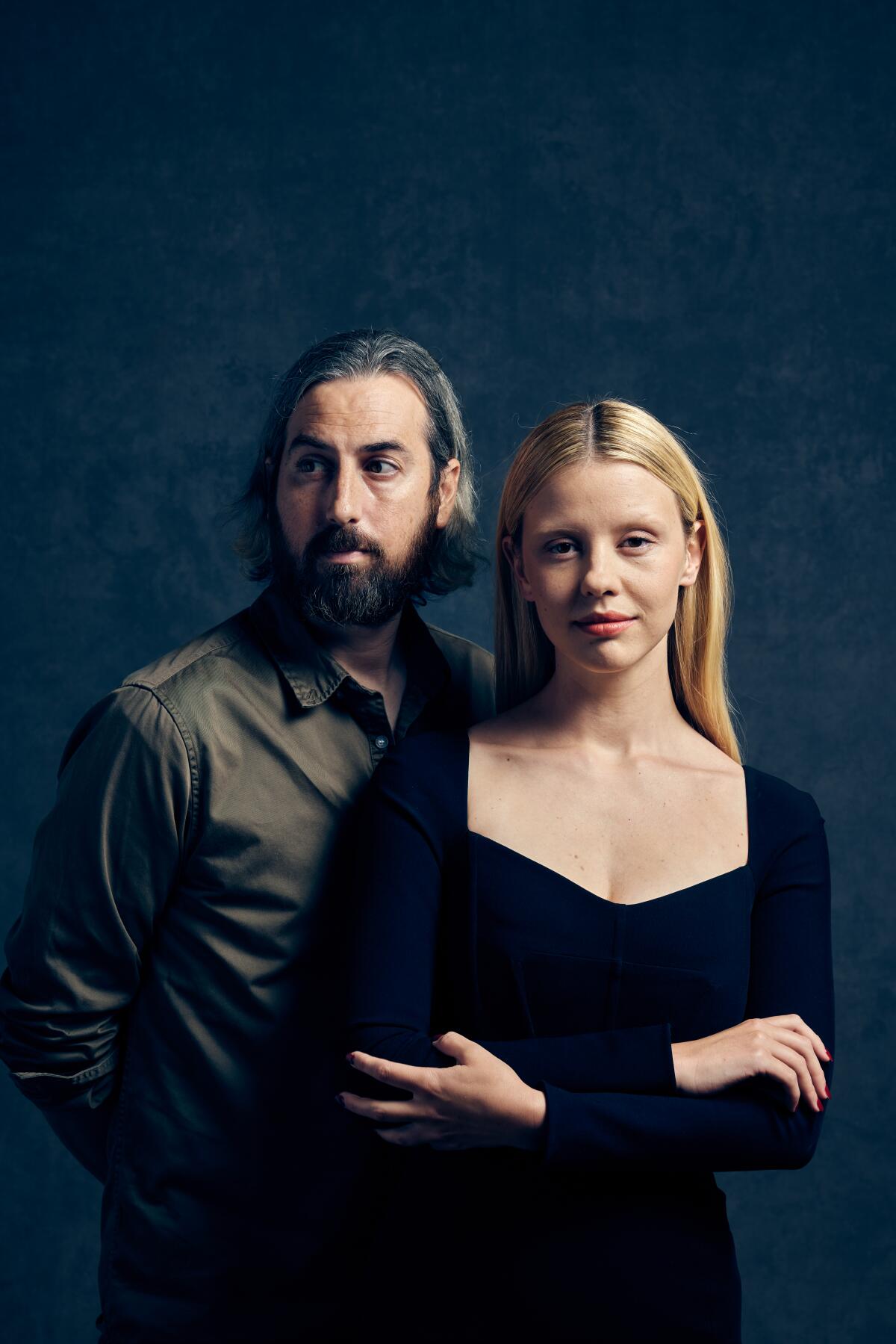
Goth found that she could relate intimately to the ways her “X” and “Pearl” characters see movies as a path to a better life. “I don’t know what I would be doing if I wasn’t an actor,” she said. “I grew up with my mom, who was a waitress in southeast London. I come from a single-parent home. Acting has afforded me an incredible life, and I can understand the aspirations that Maxine and Pearl have.”
Days after the “X” shoot ended, Goth threw herself into “Pearl” dance rehearsals. Production designer Tom Hammock gave the rundown 1970s farmhouse set a vibrant makeover between films, and costume designer Malgosia Turzanska designed period dresses with corseting and bustles, in contrast to the skin-baring outfits of “X.” Exhaustion carried over from the previous film shoot, but so did excitement. After going through the process of “X,” and writing “Pearl” together, West and Goth had built up a crucial sense of trust.
‘Pearl,’ starring Mia Goth, was filmed in secret in part because of COVID-19 restrictions
“I found on ‘X’ I was really high-strung in many ways,” said Goth. “I just cared so much. I remember really wanting it to be perfect. Quite often, I would stop a scene in the middle of a take and then want to do it again because it didn’t feel right for whatever reason.” Between the films, the collaborators had a lunch during which West assured Goth: “You can’t do anything wrong. Let’s just do it. But let’s go all in.”
Another key relationship that carried over from “X” was the casting of Pearl’s mother, Ruth. In an unusual move, Wright had served as the intimacy coordinator working closely with cast members on their sex scenes, when West encouraged her to try out for the role. “X” co-stars Martin Henderson and Owen Campbell helped Wright tape her five-page audition.
Zooming in from the set of a new film project, the Auckland, New Zealand-based actor described her dual career. “As an intimacy coordinator, I like to have everything sorted, no conversation left unhad, nothing left to doubt in terms of safety and so on,” said Wright, whose credits include “Jack the Giant Slayer” and TV’s “The Returned.” “As an actor, it’s the polar opposite: I find I do my best work when I am slightly out of control. That sort of looseness is when performers do their best work.”
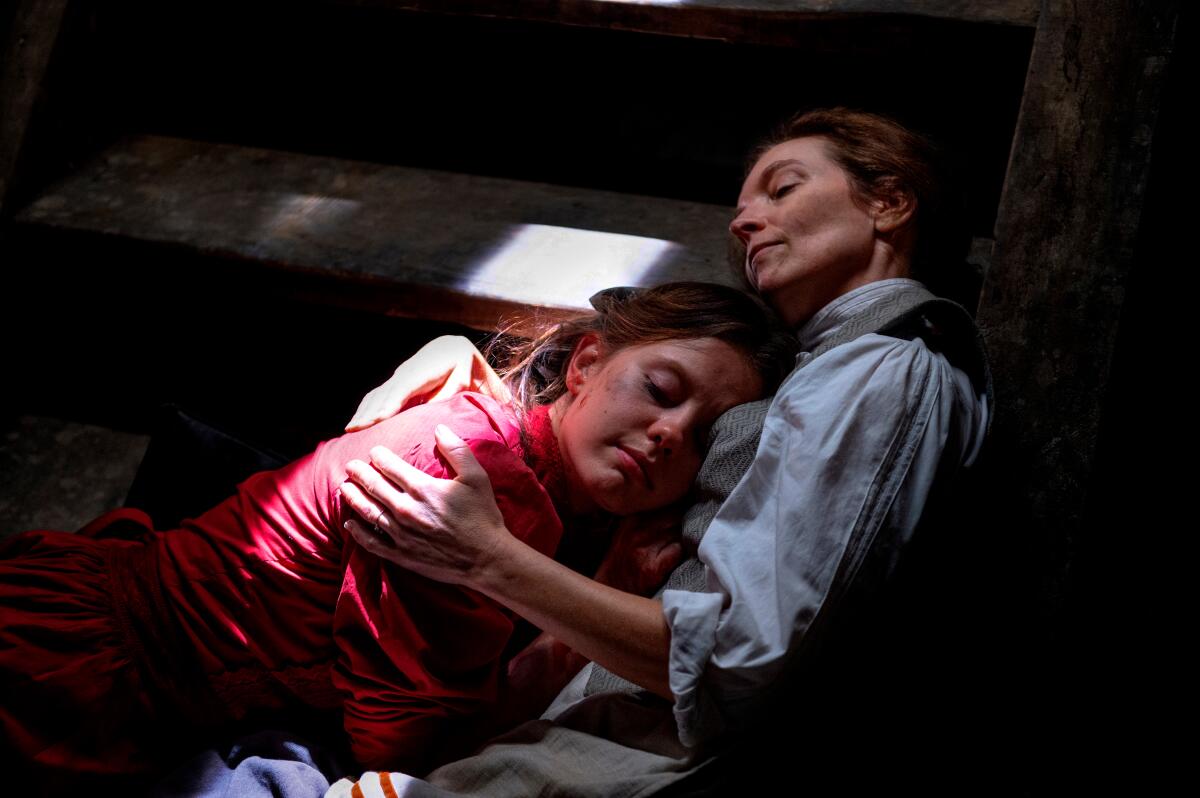
Goth credits their previous working relationship with the charged dynamic they were able to create onscreen. “There is something quite maternal about being an intimacy coordinator,” said Goth. “She was there every day with us on ‘X’ and was such a source of support for all of us. She made us all feel very comfortable in scenes that required quite a lot of vulnerability from us all, so we had established a really great relationship. We already had this whole history.”
The “Pearl” script offered “an extraordinary piece of writing,” said Wright, who gets her own meaty moment to show what she can do with Ruth’s eruption of dinner table Sturm und Drang, unleashing her own angst, regret, loneliness and sadness — and triggering an intense showdown between the mother and daughter.
“There are many things that I love about working with Mia, but one is that she is utterly genuine in who she is,” said Wright. “She has a unique energy, and she doesn’t attempt to conceal that, or make herself into something she’s not. She brings everything of her to the role of Pearl. It’s such a privilege to work with a performer like that who is using everything they are, the uniqueness of what they are, rather than trying to create some idea of something that someone else has come up with.”
Goth knew that a lot was riding on the heart-stopping monologue she delivers at the film’s crescendo, a roaring beast of a moment that brings the tension, tragedy and terror of “Pearl” hurtling toward its grandiose finale while the camera remains fixed on her face, forbidding the viewer to look away. Each morning before heading to set at 4 a.m., and every night, she would go over the “nerve-wracking” scene, which was scheduled for the last day of filming.
The day of, the crew prepared for the 10- to 15-minute scene, which would be filmed straight through with only Goth and actor Emma Jenkins-Purro, as if readying to film a stunt. Somewhere within that unbroken scene, Goth would deliver her seven-minute monologue, flying through a mesmerizing, menacing range of emotions.
“It was like, if anyone has a problem, if a phone rings, if someone’s eyeline is going to get messed up, if the microphone’s in the shot, if the wardrobe’s messed up, you have to call it out before the monologue starts — and please, nothing get in the way of this,” said West. “Because it was ultimately clearing a path for Mia to do something that was entirely on her shoulders at that point.”

She delivered it perfectly from start to finish six or seven times, modulating her performance, expertly dancing a tonal line between teary and terrifying as the volatile Pearl sheds her mask. “I remember [West] telling me at one point, ‘Listen, don’t worry. If you can’t do it, we can always cut into it.’ I was like, ’No.’ I really, really wanted to get it right,” said Goth. “I didn’t go to drama school, so I didn’t really have any tools in my bag to use like, ‘Oh, I remember that lesson, that’s how I do the monologue.’ I just had to put my own spin on it.”
“We did it the first time and once I realized, ‘OK, I’m doing it, I’m not thinking about the lines, I’m just in it,’ I was able to breathe a little more,” said Goth.
Similarly, Goth and West’s mutual trust and close creative collaboration also led to the most memorable shot of the film, an uncomfortably lingering hold on Pearl’s strained smile that goes from comical to haunting to deeply disturbing the longer it continues — a viscerally unsettling sight that places Goth’s Pearl, if not side by side, then in conversation with Joaquin Phoenix’s Oscar-winning Joker turn.
“I had this idea: We were going to end it with this smile, and then I’d pick a freeze frame of the most interesting, subtextual moment of the smile,” said West. Right before filming, he asked Goth: ‘What if you hold a smile as long as you possibly can and let’s see what happens?’ It was a moment so organic, Goth hardly remembers being in it. “I think any sort of thinking within a scene can push an actor into trouble, and it’s best to just feel it all,” she said.
She held it for three excruciating minutes. They filmed just one take. “Then, we cut and I thought, ‘This is the perfect ending for the movie,’” said West. “It was a spur-of-the-moment idea that seemed like, ‘I’ve never seen this before. Let’s see what this is like.’”
More to Read
Only good movies
Get the Indie Focus newsletter, Mark Olsen's weekly guide to the world of cinema.
You may occasionally receive promotional content from the Los Angeles Times.
